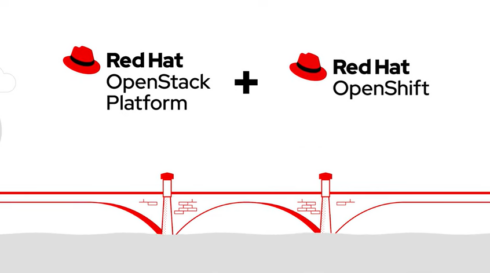
Red Hat has announced the general availability release of Red Hat OpenStack Services on OpenShift (also referred to in the Red Hat portal as OpenStack Platform 18), a new OpenStack architecture that leverages the advantages of Kubernetes.
It provides a new podified control plane that can be used to manage both existing OpenStack workloads and new containerized workloads, Red Hat explained.
“With Kubernetes and OpenStack, you can innovate quickly and manage all types of applications — bare metal, virtualized, and containerized — together,” Red Hat said in a video.
According to Red Hat, this new offering allows customers to preserve their existing investments in OpenStack APIs, allowing them to lower management costs as they incorporate new container projects into their IT operations.
Customers won’t have to rewrite or change their existing OpenStack workloads to leverage these new benefits. Red Hat will migrate existing OpenStack control planes to the new OpenShift workloads without disrupting the OpenStack worker nodes. In addition, the worker nodes will be continuously upgraded alongside the OpenStack life cycle as always.
“Red Hat is providing our OpenStack customers a path toward future proofing their existing investments. With Red Hat OpenStack Services on OpenShift, organizations can realize easier installation, lightning-fast deployments and unified management from the core to the edge – three major enhancements that came directly from customer feedback,” Sean Cohen, director of product management at Red Hat, wrote in a September 2023 blog post when the new offering was first announced as a developer preview.
Red Hat believes this unified offering will be of particular interest to telecom providers as they attempt to leverage new innovations to modernize their networks while still maintaining their existing network infrastructure.
“Red Hat’s dedication to OpenStack is demonstrated through our extensive contributions to the project, our leadership in the OpenStack community and our focus on delivering enterprise-grade OpenStack solutions to our customers,” said Chris Wright, senior vice president of global engineering and CTO at Red Hat. “This dedication must evolve as our customers’ needs change, and Red Hat OpenStack Services on OpenShift will help provide our OpenStack customers with a more unified, flexible application platform.”
Going forward, the Red Hat OpenStack control plane will be hosted on OpenShift and the Red Hat Enterprise Linux-based dataplane will be managed with Red Hat Ansible Automation Platform. Red Hat OpenStack 17.1 is the last version that will use the classic version of the control plane, and support for the class control plane will be available through the end of the 17.1 life cycle, which is in 2027.
You may also like…
Software engineering leaders must act to manage integration technical debt
Red Hat OpenShift Lightspeed brings generative AI help to the platform








